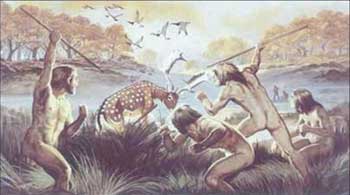 In 1999, researchers discovered bite marks on the bones of an animal dating back approximately 2.5 million years. However, no one could definitively attribute these marks to human teeth, as no suitable group of teeth had been found.
In 1999, researchers discovered bite marks on the bones of an animal dating back approximately 2.5 million years. However, no one could definitively attribute these marks to human teeth, as no suitable group of teeth had been found.
A recent analysis by Professor Peter Ungar from the University of Arkansas (USA) suggests that early members of the Homo genus likely had sharper teeth than their immediate ancestors, the Australopithecus afarensis—known for the famous fossil specimen Lucy.
He noted that the cusp slopes of the Homo teeth are slightly steeper compared to those of Australopithecus afarensis, which primarily consumed tough foods like leaves and stems but had no knowledge of meat consumption.
Moreover, the dental cusps of Australopithecus afarensis are not only shallower than those of the Homo group but also shallower than those of chimpanzees, who typically eat soft foods like ripe fruits. This indicates that the Homo group had teeth adapted for tougher food compared to Australopithecus afarensis or chimpanzees.
Professor Peter Ungar concluded: “To eat meat, one needs a dental structure suited for ripping rather than chewing. The ability to bite is determined by the steepness of the tooth cusp. The steeper the cusp, the better suited it is for processing tougher food. Clearly, early Homo individuals were capable of consuming meat.”
NGUYEN SINH




















































